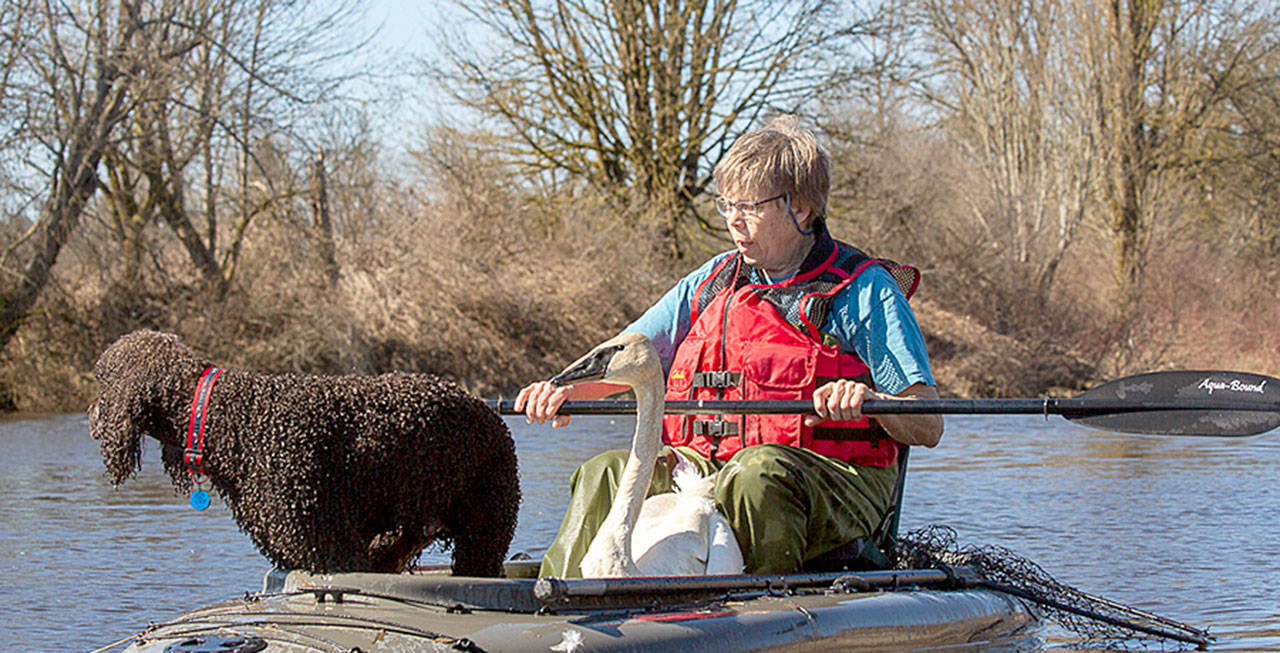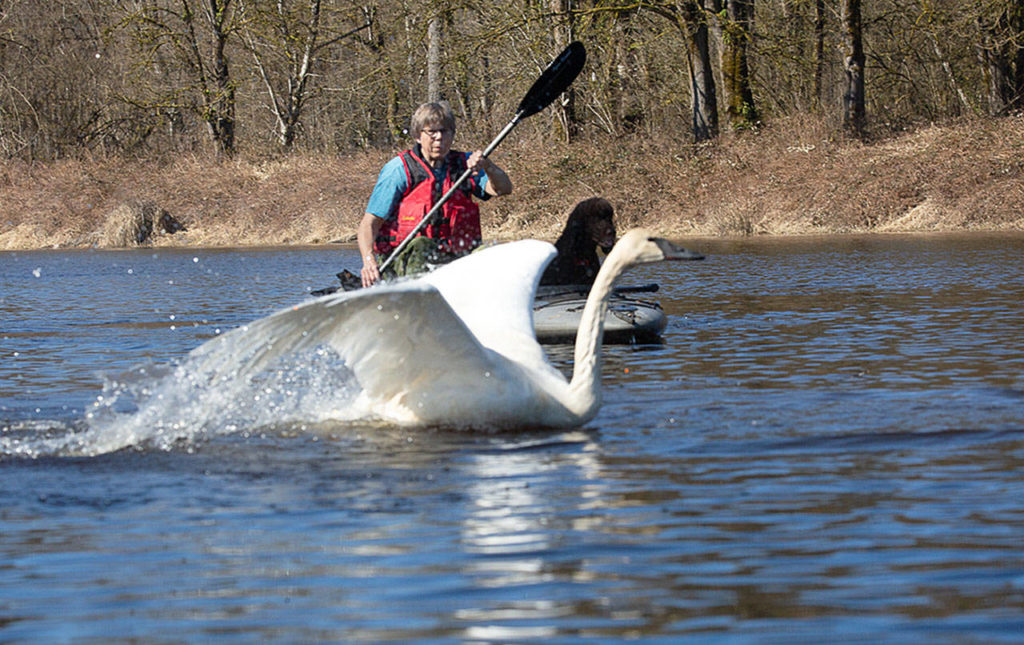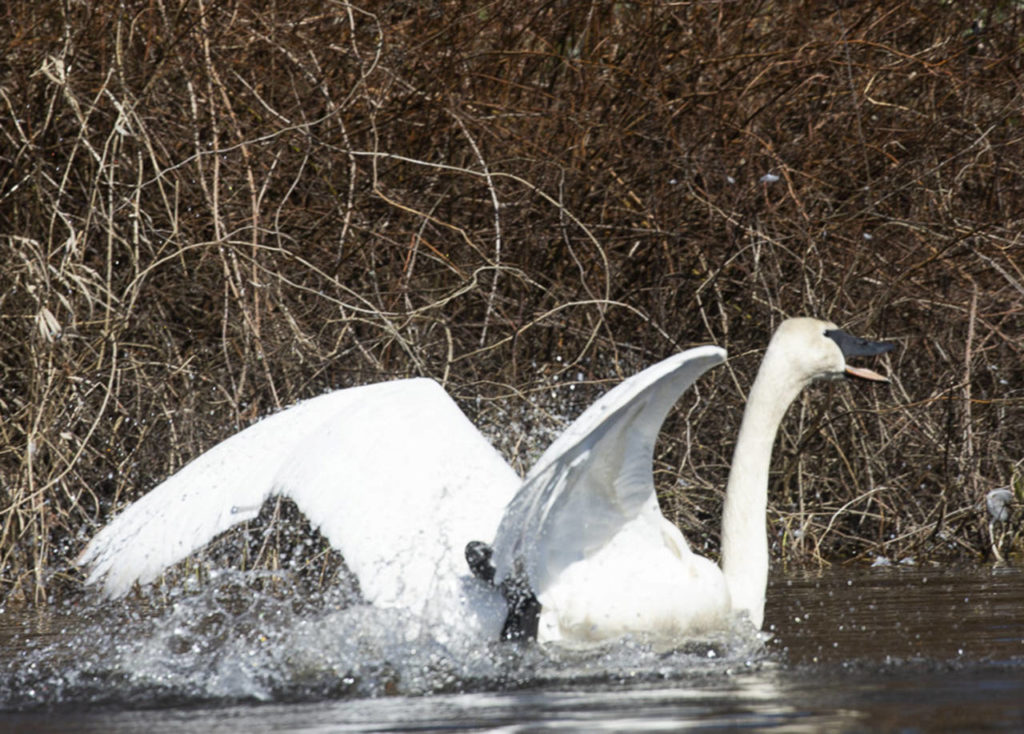MONROE — They’ve been dying in alarming numbers.
Since March 17, more than 50 trumpeter swans have been found dead or dying in an area south of Monroe and into north King County. More than two dozen of the dead came from Crescent Lake, off High Bridge Road near the Snoqualmie River, a major night roost for swans this time of year.
The state Department of Fish and Wildlife and advocates for swans have retrieved many of the birds in recent weeks. The plan is to study the swans’ livers and gizzards to confirm what’s causing their deaths.
Martha Jordan, who has been advocating for swans for more than 40 years, is pretty confident she knows the cause: lead poisoning.
The executive director of the Northwest Swan Conservation Association said the birds often ingest lead shot while feeding.
“They are exhibiting classic signs of paralysis in the digestive system,” Jordan said. The sickened birds lose coordination and become too weak to fly.
“It’s heart-wrenching to see wildlife die like this,” she said. “It’s an ugly death.”
The trumpeter swan is the largest waterfowl in North America and the largest swan in the world, according to the Fish and Wildlife department. It can be seen in farmers’ fields in Snohomish, Skagit and Whatcom counties. Trumpeter swans have snowy-white feathers, a jet-black bill and feet, and a wide wingspan.
Daniel Zimmerman, a biologist with the state Department of Fish and Wildlife, said the number of swan deaths south of Monroe has been unusual. In a more typical year, there might be around 10. Tissue samples are being sent to a lab to confirm the cause, but results aren’t expected back until early summer.
“Kind of how they are acting made it seem like lead, but I don’t know what the levels are,” he said.
Lead shot has been banned for waterfowl hunting in Washington since the early 1990s. But swans can still pick up and ingest lead shot while foraging in shallow underwater areas, in fields and roosts.
Both Zimmerman and Jordan suspect that the local winter weather could have played a role in this year’s increased mortality.
February snows might have played a role in concentrating the birds in certain geographic areas, Jordan said.
Her group is working with wildlife officials to tally the number of swan deaths and look for the source of lead shot. The swans likely ingested the lead earlier and at other locations but were affected by the time they reached Crescent Lake and other areas where they died.
“This is not an easy task, and the public swan sightings of the past eight weeks may prove helpful,” she said.
To learn more, go to www.nwswans.org or email martha@nwswans.org.
More than 50 swans in 2015 died in the Carnation-Fall City area of King County.
Despite the spate of recent deaths, area trumpeter and tundra swan populations have increased more than 14 percent overall during the past four years, Zimmerman said.
Eric Stevick: 425-339-3446; stevick@heraldnet.com.
Talk to us
> Give us your news tips.
> Send us a letter to the editor.
> More Herald contact information.



























